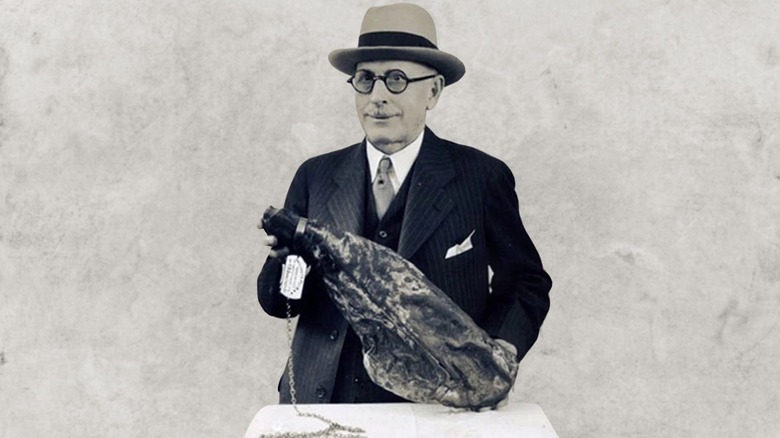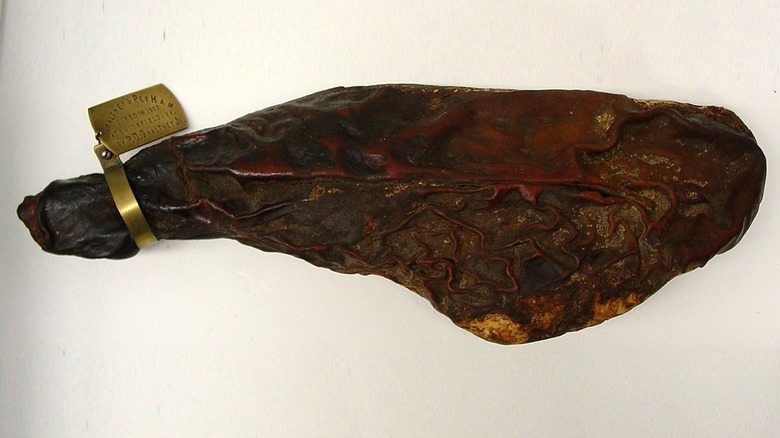The History Of The Oldest Ham In The World Before Its Webcam Fame
Tucked away in the tiny hamlet of Smithfield, Virginia, lies an incredible piece of preserved pork famous enough to have its own museum exhibit, Twitter account, and live webcam — the "ham cam." What makes this unlikely relic more than just a quirky local attraction is a testament to the art of curing and the enduring charm of Americana. This historic ham is more than a century old, dating back to 1902, when it was cured by P.D. Gwaltney Jr., the owner of one of the most successful pork-processing companies in Virginia. Gwaltney learned viral marketing from the best: His own father had a peanut business that he promoted by carrying around a legume from his personal crop that had the year it was grown (1890) etched onto it. Peanut crops were abundant in Virginia after the Civil War, and many farmers would let their pigs loose after harvest to gobble up any leftovers.
This potent combination of peanut-fed pigs and an exceptional curing process (which makes country ham, not city ham) led to Smithfield Hams becoming a sought-after delicacy. Queen Victoria reportedly ordered six hams a week for her palace kitchen. The hams became such a hot item that the Virginia legislature enacted strict rules about what qualified as Smithfield Ham: The pig must have been fed at least partially peanuts, and the ham must have been cured within Smithfield corporate limits. After the Gwaltneys' peanut business burned down, the family set their sights on dominating the ham industry — they just needed the right marketing gimmick.
How the ham went viral
In 1902, a cured ham from the Gwaltney Foods company was lost in storage, only to be discovered 20 years later by Gwaltney Jr. himself. Inspired by its longevity, he decided to turn the accident into a promotional piece of preserved pork. He deemed it his "pet ham" and fastened a brass collar around it, taking it with him on the road to demonstrate his curing process's longevity. Gwaltney was serious about his ham; he first insured it for $1000, then upped it to $5000, which is upwards of $90,000 in today's money. In 1929, the aged ham was featured in Ripley's Believe It or Not, and then again after it turned 100 years old.
Gwaltney's viral marketing trick apparently worked, as the ham is still relevant today. Its current resting place is the Isle of Wight County Museum in Smithfield, Virginia. The ham remains a beloved local curio after all these years, as seen by its aforementioned Twitter account and 24/7 webcam. By now, the ham has seen better days (but hasn't gone bad). It's still technically edible, according to microbiologists. Now more than 120 years old, the appearance of the last genuine Smithfield ham is not the most appealing, and has drawn comparisons to dried leather and an expired human arm. But there's no need to worry about the aging pork product getting lonely, as it gets to share the museum with a relative of sorts: Gwaltney Sr.'s aged legume is also featured as the "world's oldest peanut."

